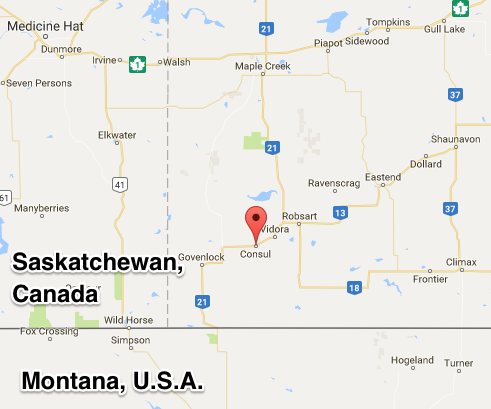Robsart-Vidora Irrigation District
While the federal government had prepared plans for the conversion of Cypress Lake into a reservoir, it was not prepared to provide the funds for its actual construction. The federal government since 1894 held the view that the actual construction of irrigation infrastructure was the responsibility of provincial governments and the private sector. Given the federal government’s policy, the governments of Alberta and Saskatchewan encouraged the creation of farmers’ operated irrigation districts which could bring the Federal plans to fruition. The expectation was that these irrigation districts could raise the funds for capital construction through the issuing of bonds. The Alberta government provided such guarantees for three districts, but discontinued this policy when all three districts defaulted on their bonds. Saskatchewan passed similar legislation, but never provided bond guarantees.
In 1920 it was proposed to create the Cypress Lake Irrigation District to implement the federal government plan to build an irrigation system on the south slopes of the Cypress Hills. In 1921 the name was changed to the Robsart-Vidora Irrigation District and water was reserved from the Frenchman River for its use. The federal government had abandoned the use of Cypress Lake as a reservoir in favor of a reservoir in the Frenchman River. The federal government furnished the residents of the Vidora and Robsart area with plans to irrigate 10,000 acres from the Frenchman River. The Robsart-Vidora Irrigation District was formally established in 1923 through legislation passed by the Saskatchewan Legislature. The lack of financial support from the Saskatchewan government led to its failure to carry out the plan.
The federal government through to 1930 continued to inspect the irrigation systems on the Battle Creek as well as Middle Creek and collect hydrometric data. Neither the federal government’s Department of the Interior or the Province of Saskatchewan took further initiatives to improve irrigation infrastructure following the failure of the irrigation district idea through to the mid-1930s.

